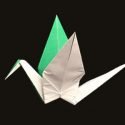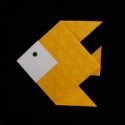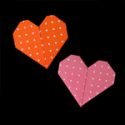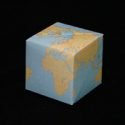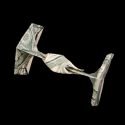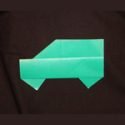Pure and Pureland Origami
Most people know origami as the Japanese art of paper folding where a single sheet of paper is folded into a model without the use of tape, glue, scissors, or other tools.
Not exactly true… first of all, there is debate as to where origami originated (go to the history of origami to read more). Second, the rule of no cutting, glue, tape & tools is only true for Pure origami.
The rules of Pure origami are as follows:
- start with a square piece of paper,
- do not use glue, tape, or scissors,
- and do not decorate the model after it is complete.
Pure Origami is a relatively new invention. Making paper creations with folding and cutting was common in the past. The 200 year old book Senbazuru Orikata shows models where cuts have been made. There’s no apology or “oops” involved, it was okay to have cuts. Even today, some Japanese origami books will have models that have cuts.
Origami has evolved to include many other styles. For example:
- in modular origami and origami quilts, more than one sheet of paper is used.
- In dollar bill origami, business card origami, and fabric origami, money, business cards, and cloth are used instead of paper.
- And, there are many models that start with a triangle, a rectangle, a pentagon, and even a circular piece of paper.
Click here to read more about the different types of origami.
Pureland Origami
In the late 1970’s, John Smith developed the concept of “Pureland” origami. The rules in Pureland origami are the same as those for pure origami with the added restriction that only mountain and valley folds are allowed. The “land” part of Pureland comes from the fact that mountain and valley are elements of land.
Pureland origami may be suitable for people with disabilities because there are no complicated sinks or reverse folds. Interestingly, some people find pureland origami to be challenging: make beautiful models with the most basic folds. In a zen sort of way, Pureland brings people away from the complexity and back to the simplier times and ways of life. See John Smith’s web site to see how and why he started Pureland Origami.

Pure Pureland Diagrams:
- PureHeart (C Esseltine)
- Pureland Anteater (R Foelker)
- Pureland Bear (S O’Hanlon)
- Pureland Box for Decorating (J Smith)
- Pureland Butterfly (J Smith)
- Pureland Cat’s Head (N Robinson)
- Pureland Dracula (R Glynn)
- Pureland Fish (M Kirschenbaum)
- Pureland Puppy (J C Nolan)
- Pureland Santa Card (S Chen)
- Pureland Stegosaurus (M Kirschenbaum)
- Pureland T-rex (M Kirschenbaum)
—> read about other types of origami
—> see free origami diagrams
—> go to Site Map


